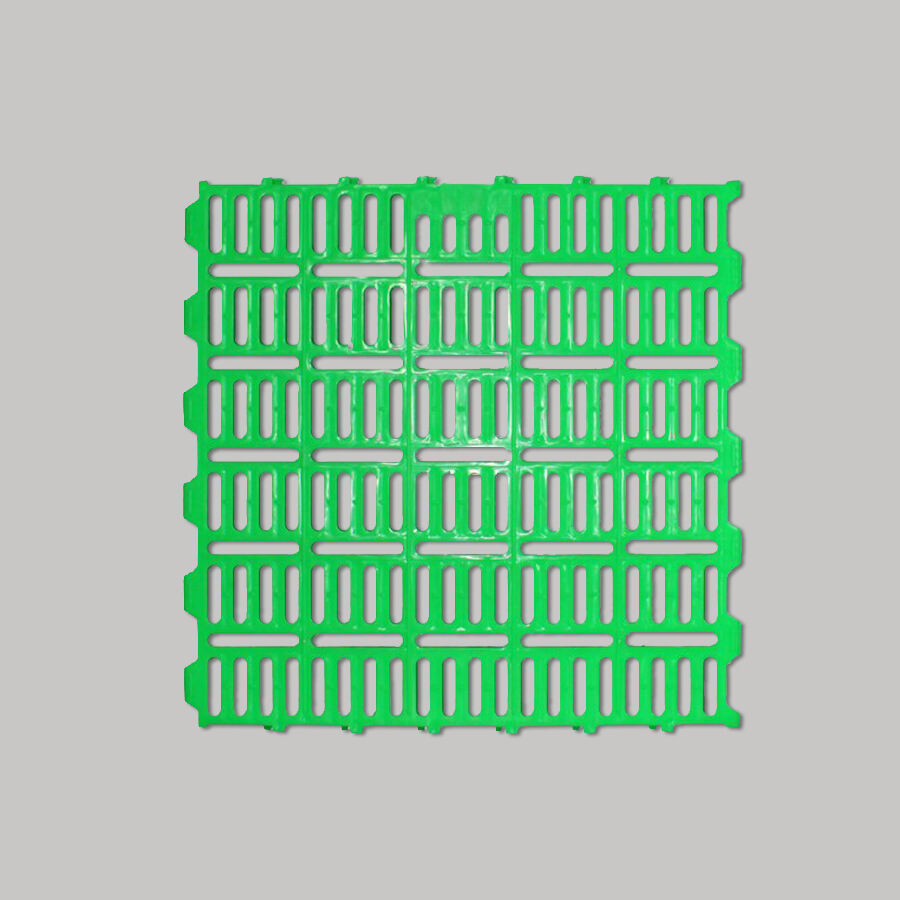Introduction: Revolutionizing Pigpens with Durable Flooring
Pig slat floors are changing things quite a bit in the pig farming world these days. They're doing more than just making pigs more comfortable, though that's definitely part of it. Farmers find these floors actually help streamline their daily work and boost overall productivity on the farm. The newer models come with materials that last longer and clean up easily, which tackles those pesky maintenance problems many farmers face. Plus, they address real issues around keeping pigs healthy. Some farms report cutting down on cleaning time by almost half since switching to these systems. As we look ahead, these innovations seem poised to set a whole new benchmark for what's possible in modern pig husbandry practices.
Enhanced Animal Health Through Pig Slat Floors
Keeping pigs healthy inside their pens matters a lot, and slat floors actually make a big difference when it comes to injuries and lameness problems. The way these floors are built helps prevent pigs from slipping around so much, something that often leads to all sorts of injuries. With those slats in place, there's just more stability overall, making falls far less likely than what happens on regular solid floors. Research looking into this stuff consistently finds that pens with slat floors see fewer injuries happening. Why? Well, they give better grip underfoot and let water drain away properly. No more standing in puddles or walking through muck and manure, both of which are major contributors to lame pigs. When the floor drains well, everything stays cleaner and drier too, which makes life much better for the animals living there day after day.
Pig slat floors really help with disease control since they keep things cleaner overall. The slats make it much easier to manage manure, which cuts down on pathogens building up and causing disease outbreaks. Farmers who have switched to these floors report seeing fewer sick pigs in their pens. When waste doesn't pile up anywhere, the whole operation stays healthier. Many modern slatted floor designs also come with better ventilation built right in. This means fresher air circulating through the barns, which helps stop diseases from spreading so easily. Good air quality matters a lot for pig health, and the latest flooring tech actually makes a big difference here. These systems combine practical benefits like easier cleaning with important health advantages that every养猪户 (pig farmer) should consider.
Productivity Gains from Quality Slat Flooring
Optimized Growth Performance in Pigs
Quality pig slat floors make a real difference when it comes to how well pigs grow. Farmers who've made the switch notice something interesting about their herds. The floor type actually affects how efficiently pigs convert feed into weight gain, something every producer watches closely. Take a look at what happens on farms that installed these slatted systems versus old fashioned solid floors. Pigs tend to put on weight faster and eat better overall. Why? Because the gaps between the slats let waste drop through, keeping the pens much cleaner. Cleaner environments mean less stress for the animals, and we all know stressed pigs don't perform as well. Better welfare translates directly into healthier livestock and ultimately higher profits for operations big and small.
Better living conditions mean pigs actually get more out of their feed because they spend less energy just surviving poor environments and more on actual growth. Slat flooring systems offer some pretty important advantages when it comes to managing entire herds. These floors create cleaner spaces where disease spreads less easily, which helps pigs grow properly without constant health issues getting in the way. Farmers notice that pigs on good quality slats tend to gain weight faster and stay healthier overall. When looking at different options for pig housing, many producers find that investing in quality slatted floor systems pays off in the long run through better animal performance and easier day to day management tasks around the barn.

Economic Benefits and Cost Efficiency
Long-Term Durability and ROI
Pig slat floors can actually save money in the long run because they last so much longer than regular flooring options. Good quality slats just need basic cleaning and occasional checks instead of constant fixing or replacing altogether. Farmers who have switched report that these floors handle all the weight and movement without cracking or breaking down like cheaper alternatives do. The savings really add up when thinking about how often traditional systems need patching or complete overhaul. Most pork producers find that while the initial cost might be higher, the money comes back many times over throughout the years simply by avoiding those expensive repair bills.
Looking at actual farm experiences shows that many operations see good returns after installing slat flooring systems. Farmers report spending less on vet bills because their pigs get hurt less often, and this makes sense when we think about it the healthier the animals are, the better they perform overall. When pigs aren't constantly struggling against rough or unstable floors, they actually put on weight faster and reach market weight sooner than those kept on traditional concrete. The financial impact is pretty significant too some farms cut their medical costs by nearly half within just six months. Plus, with fewer injured animals needing special care, workers can focus on other important tasks around the barn, making day to day operations run much smoother across the board.
Quality slat flooring lasts way longer than most other floor types used in pig barns, which makes financial sense for anyone running a swine operation. Good quality systems often stick around for 20 years or more before needing replacement, maintaining their performance through all sorts of conditions without breaking down every few months. Farmers who install these floors find they spend less time fixing leaks and replacing damaged sections, so they can put more effort into improving overall farm productivity. For pork producers looking at their bottom line, spending money upfront on solid slat flooring pays off big time down the road, cutting maintenance costs while keeping pigs comfortable and healthy over many production cycles.
Waste Management and Environmental Advantages
Pig slat floors bring real benefits when it comes to managing waste and protecting the environment in today's swine farms. The way these floors work lets waste drain away efficiently, so there isn't as much poop and pee building up on top. Less buildup means fewer ammonia fumes floating around, something that makes life better for both the animals and people working on the farm. Another plus is how these slats help control runoff. When rain hits regular concrete floors, all sorts of nasty stuff gets washed away into nearby water sources. But with proper slat installation, this risk drops dramatically, making the whole operation greener in the long run. Farmers who switch to slat flooring often notice their pigs seem happier too, probably because they're living in a cleaner space without standing in their own waste all day.
Labor Efficiency with Low-Maintenance Floors
Looking at ways to boost efficiency on farms, low maintenance flooring options such as pig slat floors make all the difference. What stands out most is how they cut down both time spent and money paid for keeping things clean. Back in the day, barn cleaning meant hours of backbreaking work for farmhands. This wasn't just tiring for workers it actually cost the operation real cash too. That changes when installing pig slat floors though. Cleaning gets much easier because these special floors let waste pass through naturally. Farmers report spending way less time on sanitation tasks, which means more hours available for other important farm duties without sacrificing cleanliness standards.
Pig slat floors tend to cut down on labor work quite noticeably around most farms. Some research points to savings of about 30% when it comes to those tedious cleaning jobs that take so much time. What this really means is farmers get their hands free for things that matter more day to day. Instead of scrubbing concrete all morning, workers can focus on taking care of the animals properly or fixing that old tractor that keeps breaking down. The extra time makes life better for everyone on site too. Farmhands aren't stuck working late just to catch up on chores anymore, which helps keep morale high while getting more done across the entire operation during regular business hours.
These efficiency gains really boost how productive operations are day to day. When less time gets eaten up by maintenance tasks, workers have more headspace for other important stuff, and equipment runs better without constant interruptions. And let's talk about those pig slat floors for a second they clean so much easier than traditional options. Cleaner floors mean healthier pigs too since there's less buildup of waste and pathogens around. So when looking at the big picture, going with flooring that requires minimal upkeep saves money on labor costs while making sure farm staff can focus on what matters most. Plus, animals stay healthier in their environment, which makes good business sense in the long run.
Conclusion: Transforming Pig Farming Outcomes
To wrap things up, switching to good quality pig slat floors marks a real game changer for pig farming results. When farmers focus on getting those durable, work efficient floors that last longer without breaking down, they see improvements across the board. The pigs stay healthier overall since the floors prevent disease spread better than older models. Operational costs drop because there's less need for constant repairs and replacements. Productivity goes up too as animals perform better in cleaner environments. For farm owners looking at bottom lines, these floors make financial sense while meeting new regulations about animal welfare standards that are becoming standard practice across the industry. Looking ahead, this kind of investment points toward a more profitable and responsible future for pig producers everywhere.
FAQ
What are pig slat floors?
Pig slat floors are specially designed flooring systems that provide better drainage and stability in pig pens, helping to improve animal welfare and farm efficiency.
How do pig slat floors improve animal welfare?
These floors reduce injury risks by offering better traction and drainage, lowering the chances of slips and falls. They also improve hygiene by facilitating waste management, reducing disease risks.
Can pig slat floors improve farm productivity?
Yes, they can optimize pig growth performance by improving living conditions, thus increasing feed efficiency and reducing stress. They also lower maintenance costs, boost economic returns, and promote labor efficiency.
Are pig slat floors environmentally friendly?
Yes, they assist in efficient waste management, reducing ammonia emissions and mitigating groundwater contamination risks, supporting sustainable farming practices.
Table of Contents
- Introduction: Revolutionizing Pigpens with Durable Flooring
- Enhanced Animal Health Through Pig Slat Floors
- Productivity Gains from Quality Slat Flooring
- Economic Benefits and Cost Efficiency
- Waste Management and Environmental Advantages
- Labor Efficiency with Low-Maintenance Floors
- Conclusion: Transforming Pig Farming Outcomes
- FAQ

